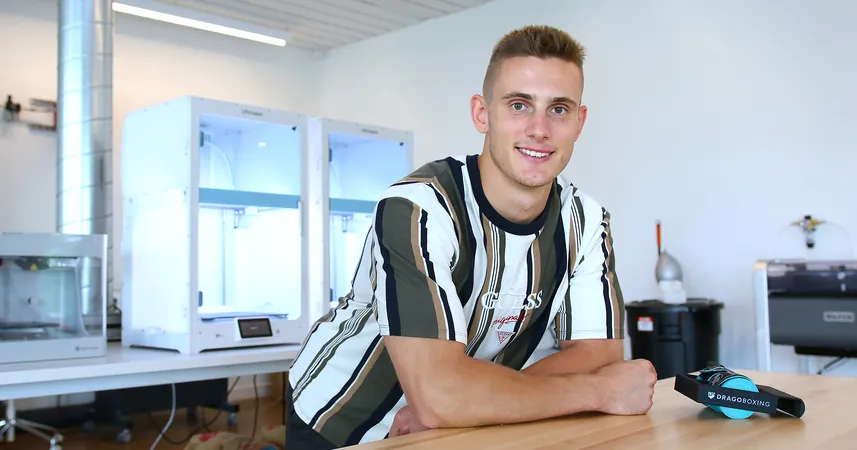
Unlocking the Secrets of Photomagnetic Materials: The LUX-INVENTA Breakthrough!
2025-07-02
Author: Olivia
Exploring the Future of Photomagnetic Materials
The ambitious LUX-INVENTA project, supported by the European Research Council, is revolutionizing the way we think about photomagnetic materials—innovative substances that can be magnetized using just visible light!
What Exactly Are Photomagnets?
Photomagnets are compounds that change their magnetic properties when exposed to light. This groundbreaking concept, first introduced by molecular magnetism pioneers Hashimoto, Miller, Verdaguer, and Dei, builds on the light-induced excited spin state trapping (LIESST) effect discovered in certain iron(II) complexes. Such transformation opens up new pathways in advanced material science.
Understanding the Photomagnetic Effect
The photomagnetic effect encompasses various magnetic systems, including diamagnetic, paramagnetic, and ferromagnetic materials. Essentially, a specific part of the molecule, known as a photomagnetic chromophore, absorbs light, triggering a series of events that alter its spin state and, consequently, its magnetization. This is an essential step toward creating materials that get magnetized upon exposure to light.
Aiming for High-Temperature Photomagnets
Currently, photomagnets function at extremely low temperatures, often requiring costly liquid helium for cooling. However, the LUX-INVENTA team's mission is to craft high-temperature photomagnets—paramagnetic compounds that can be magnetized at room temperature when illuminated. This would be a game-changer for practical applications!
Innovations in Photomagnetism
Through innovative photocrystallographic and photomagnetic studies, LUX-INVENTA has identified a high-performance photomagnetic chromophore: the heptacyanomolybdate(III) complex anion. This discovery demonstrates an unexpected transformation of the molecular structure, leading to changes in spin states and magnetization—setting the stage for an entirely new category of high-temperature magnets.
Introducing Tripak: A Game-Changer in Molecular Design
One of the standout achievements from LUX-INVENTA is the creation of a groundbreaking molecule named tripak. This remarkable compound exhibits unique redox properties, allowing it to exist in five different valence states and accommodate up to six electrons—an extraordinary feat achieved with minimal electrical potential. From molecular qubits to energy storage, tripak's versatility opens doors to numerous applications!
The Pursuit of Room-Temperature Photomagnetism
While the search for effective room-temperature photomagnets continues, LUX-INVENTA is already breaking new ground by demonstrating a novel photoswitching mechanism through a reversible photodissociation reaction. This exciting feat expands the potential applications of photomagnetic materials.
Charting New Territories in Material Science
The journey doesn't end here! The project's findings have inspired investigations into derivative molecules, further enhancing the potential for chemical modifications and tuning properties. LUX-INVENTA is spearheading a new wave of research that could revolutionize the future of quantum technologies, energy efficiency, and molecular sensing.









 Brasil (PT)
Brasil (PT)
 Canada (EN)
Canada (EN)
 Chile (ES)
Chile (ES)
 Česko (CS)
Česko (CS)
 대한민국 (KO)
대한민국 (KO)
 España (ES)
España (ES)
 France (FR)
France (FR)
 Hong Kong (EN)
Hong Kong (EN)
 Italia (IT)
Italia (IT)
 日本 (JA)
日本 (JA)
 Magyarország (HU)
Magyarország (HU)
 Norge (NO)
Norge (NO)
 Polska (PL)
Polska (PL)
 Schweiz (DE)
Schweiz (DE)
 Singapore (EN)
Singapore (EN)
 Sverige (SV)
Sverige (SV)
 Suomi (FI)
Suomi (FI)
 Türkiye (TR)
Türkiye (TR)
 الإمارات العربية المتحدة (AR)
الإمارات العربية المتحدة (AR)